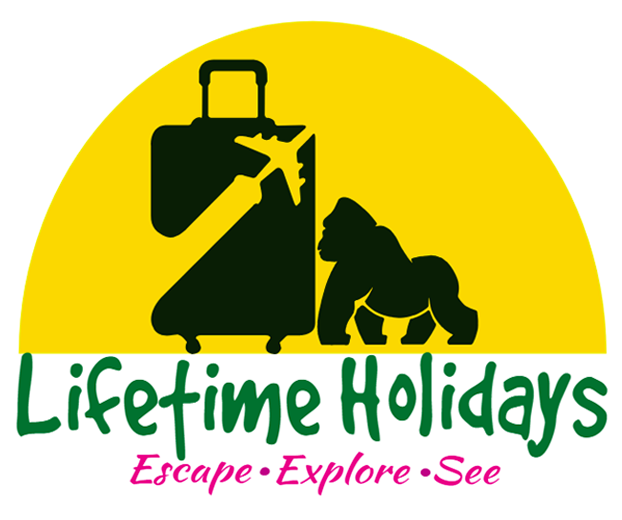+256 701950885
info@lifetimeholidaysug.com
- Home
- About us
- Uganda
- Long Day Safaris
- 24 Days Best of Uganda Wildness Adventure
- 21 Days Uganda Safari, Gorillas and Chimpanzees, Wildlife Holiday
- 18 Day Great Apes of Uganda Wildlife and Adventure
- 17 Day Uganda Safari Gorilla Safari & Wildlife
- 16 Days Exploration of Uganda Safari and Savannah Holiday
- 15 Day Uganda Safari, Adventure & Wildlife
- 14 Days Explore Uganda Safari, Gorilla and Chimpanzee
- 12 Days Uganda Package and Primates Safari Uganda
- 12 Days Customized Uganda Tour for Wildlife and Gorilla
- 12 Days Rwanda Uganda Gorilla Tour and Safari Vacation
- Long Day Safaris
- 10 Days Uganda Safari Primates and Wildlife Safari
- 10 Days Uganda Safari Primates, Wildlife & Lake Bunyonyi
- 9 Days Uganda Tour Gorillas, Chimps and Big 5 Wildlife
- 8 Days Uganda Safari Luxury and Big Five Wildlife Safari
- 8 Days Uganda Gorillas, Chimpanzee Trekking
- 7 Days Uganda Safari Wildlife, Gorillas and White Water
- 7 Days Uganda Gorilla Trekking and Wildlife Safari Package
- 7 Days Uganda Fantastic Wildlife Safari Holiday
- 7 Days Murchison Falls, Chimps & Gorilla Trekking
- Short Day Safaris
- 6 Days Budget Friendly Wildlife with Gorilla Trekking
- 5 Days Gorilla Trekking and Wildlife Safari Experience
- 5 Days Uganda Family Trip with African Big 5 Safari
- 5 Days Uganda Gorillas, Wildlife and Chimpanzee Trekking
- 4 Days Fly-in Chimps and Gorilla Trekking Tour in Uganda
- 4 Days Gorilla Trekking and Lake Bunyonyi Relaxation
- 3 Days Big 5 Safari Murchison Falls National Park Uganda
- 3 Days Gorilla Trekking and Cultural Safari
- 3 Days Luxury Fly In Gorilla Trekking Safari
- 3 Days Safari to Queen Elizabeth National Park
- 2 Days Murchison falls safari
- Long Day Safaris
- Rwanda
- 10 Days Classic Rwanda Primate, Wildlife & Cultural Safari
- 8 Days Game Safari in Rwanda
- 7 Days Highlights of Rwanda
- 6 Days Rwanda Adventures – Great Apes & Lake Kivu
- 4 Days Rwanda-Uganda Golden Monkey and Gorilla Trekking
- 4 Days Rwanda Gorilla & Culture Tour
- 4 Days Rwanda Gorilla Trekking
- 4 Days Primates and Culture Adventure
- 3 Days Rwanda City Tour & Mountain Gorilla Experience
- 3 Days Rwanda Akagera Wildlife Safari and a Boat Cruise
- 3 Days Nyungwe Forest National Park Tour
- Kenya
- 10 Days Kenya 6 Parks Best Wildlife Safari to Diani Beach
- 6 Days Best of Kenya Wildlife Safari
- 6 Days Best of Kenya Samburu Naivasha & Masai Mara Safari
- 6 Days Kenya Wildlife Mid Range Safari Kenya
- 5 Days Kenya Masai Mara, Lake Naivasha & Amboseli Safari
- 4 Days Lake Nakuru and Masai Mara Budget Safari
- 4 Days Kenya Masai Mara and Lake Naivasha Safari
- 3 Days Masai Mara Wildlife Mid-Range Camp Safari
- 3 Days Tsavo East and West Safari from Mombasa or Nairobi
- Tanzania
- 11 Days Northern Circuit Safari & Beach
- 9 Days Migration River Crossing
- 7 Days Mid-Range Epic Adventure
- 7 Days Luxury All-Inclusive Epic Safari
- 6 Days Mid-Range Epic Adventure
- 6 Days Luxury Northern Circuit Safari
- 5 Days Mid Range Best of Tanzania
- 5 Days Luxury Best of Tanzania
- 4 Days Mid-Luxury Wilderness Safari to Tanzania
- 3 Days Taste of Tanzania Mid-Range (Tarangire Ngorongoro)
- 3 Days Tsavo East and Taita Hill Saltlick Safari
- Blogs
- Contact Us

